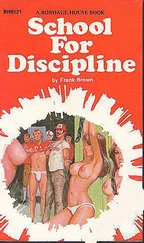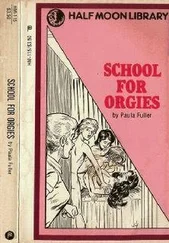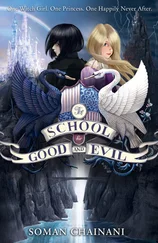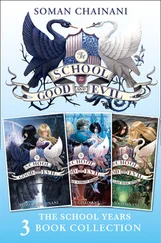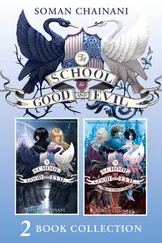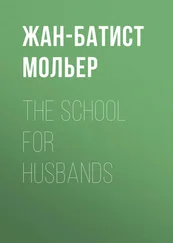The Reich Reader would frighten no one. It is not an open scandal; it smells of barrenness, cheerlessness, and bad taste — just as the Pavilion did — but not of danger.
But the little leaflets!
The unofficial, or semi-official, propaganda pamphlets, scattered throughout the curriculum by the Nazi Teachers’ Union or related organizations as though by chance — they are the real Reader….
The Führer offers the world a protective series of texts, only slightly offensive, while the essential pamphlets are covered by the curtains of the official libraries.
The first book that the child out of kindergarten sees is the Primer; and this, at the express wish of the Führer, has been revised to suit the times. Various primers go to different regions, but they all deal, in word and picture, with camp life, marching, martial drums, boys growing up to be soldiers, and girls to take care of soldiers.
Rhineland Children, a primer written by Richard Seewald and Ewald Tiesburger, is the most effective introduction to the military life. Children learned to read, in the past, through words more peaceful than:
Hört, wir trommeln, bum, bumbum —
Hört, wir blasen, tä terä tä tä!
Nun, das Lager räumen!
Listen to the drums, boom, boom, boom —
Listen to the trumpets, tateratata!
Come on, clear the camp!
The supplement to this primer was published by the Stürmer Verlag, is highly recommended officially, and, although it is an expensive book, has already reached a sale of more than seventy thousand copies. By Elvira Bauer, it has a title astonishing both in length and content: Trau keinem Fuchs auf grüner Heid! Uud keinem Jud bei seinem Eid! (Trust no fox on green heath! And no Jew on his oath!) On the bright red cover are two pictures with the title. One is of the fox, peering around a corner maliciously eager for his prey; and the other, a typical Nazi caricature of the Jew, beneath a star of David — huge nose, thick lips and bleary eyes, swearing his false oath with fat fingers raised. The book is printed in a luxurious edition, with many colored illustrations, and with two-color text. That is, those words which the authors wish to impress upon their readers are printed in red — “Devil,” “Jews,” “thick-lips,” “gangster.” It is impossible to describe the level of sadistic cruelty, the dishonesty and barbarism of this book, the core of all future training,
The tone of instruction in history was altered rapidly by the Nazis. A teachers’ textbook by Karl Alnar advises that the teaching of history “is a means of solving the political-historical task of the people…. The aim of instruction is preparation for the battle for self-assertion of a people: that is, political development. The history of the world is to be regarded from the racial point of view.”
And in the periodical National Sozialistisches Bildungswesen, Friedrich Flieder says in an essay on “History as the Essence of Political Education”: “Present and future instruction in history take cognizance of the fact that the aims are not so much scientific as essentially practical.” And he adds in italics: “The crown of all teaching of history consists of nothing but following the Führer.”
They have been winning this crown since 1933. The N. S. Lehrer Bund, Breslau district, publishes a series of three-cent Essays for the Purpose of German Renovation, which enjoys a circulation of over four million. The first issue alone (“Adolf Hitler, Germany’s Savior”) reached 347,000. In Saxony, the Bund circulates a slightly more important series, containing such titles as “Adolf Hitler,” “The Lie of War Guilt,” etc., of which the Prussian teachers’ periodical wrote, in 1934, “If the subsequent issues are as inspired, a new spirit will enter the schools.”
That spirit has entered. Wherever we look, we find it, expressed in paragraphs like those which follow, and all of which are average, typical examples, which might be exchanged for any of countless statements.
German History, by Herbert Goebel, contains these truths about world affairs during the post-war period:
“England was the greatest winner, as she was also the greatest impelling force toward the World War. Out of envy, she destroyed her rival in the field of world economics, Germany. Without her colonies, France would today be a power of secondary rank only; with approximately one-sixth colored population, European France today can hardly be regarded as a white people.”
As for the Slavs, according to Goebel, they did originally “belong to the Nordic race, but they were regarded as foreigners by the Germans, because they had very early become so interrelated with Mongolian hordes that almost nothing was left of their Nordic blood. The result of this mixing of races, as well as of later instances of the same thing, is that the Slavs have never produced any culture worthy of the name; their uncleanliness, submissiveness, lack of loyalty and sudden outbursts of wildness are their Mongolian heritage.”
Goebel grows most insistent when he is referring to German-speaking neighbors. He reports the Austrian Nazi Putsch of July 25, 1934, in the course of which the Austrian Chancellor, Dollfuss, was murdered by National Socialists, as follows:
“In the summer of 1934 there were armed uprisings on the part of the Marxists in Vienna and other places in Austria. In the course of bloody battles, the Chancellor of the Union was mortally wounded.”
A book by Karl Ruger, especially recommended for small children by Hans Schlemm (the Bavarian Minister of Education, who has since been killed in a plane crash), is an addendum to a larger volume, The Onward March of the German Nation by a Herr von Fikenscher.
“Ask your father, your uncle, etc., to tell you war stories.
“Bring anything you have at home pertaining to the War.
“In the following study period we will examine the objects brought to school: shell fragments, bullets, parts of projectiles worked into jewelry, etc. — mind the fuses! and we’ll talk about the uses to which these were put during the War. After this we’ll describe scenes, such as a day in the trenches, an air raid, black Frenchmen, a bursting bomb, the burial of a comrade (using the universally-sung melody, Ich hatt’ einen Kameraden! ), how a dying man writes a farewell letter, a day of rest behind the front (Jews).”
Karl Ruger insists that the Jews, in large numbers, were having fun behind the lines while the Germans wrote farewells and died. Surely he knows that a disproportionately large percentage of Jews died in the War; but there is no concern here, either, for the truth. The one aim is to fix “race-consciousness” and blind obedience to the Führer in the children. We go on to the “Letters of Soldiers from the Front”:
“…As for the rest, we shoot but little and are not much shot at. Our activities consist principally in sleeping, eating, smoking, and playing chess. Some of the men play cards. We write letters and read the newspapers. You see, it is quite a cozy life. Especially in the evenings, in our ‘living room,’ when there is a little candle burning on the table around which we have gathered, everyone smoking or doing away with the sweets that have come by field-post. In the background, someone is making coffee on a little stove; another man is drying his socks, a third warming potatoes, and a fourth playing the mouth-organ, while the rest hum the melody, loudly and softly, along with him; yes, that can be unbelievably cozy.”
“Cozy”; that is the atmosphere of war, although Ruger admits that “dangerous things” are occasionally found. They are: aviators, grenades, bombs, bullets, poison-gas, cannon, rifles, machine-guns, tanks, sabers, barbed wire, shell fragments — a list that each child must memorize. He must also learn “What the soldier needs,” and “All about Ersatz products.” Written exercises are on themes like “The dictated peace of Versailles”:
Читать дальше


